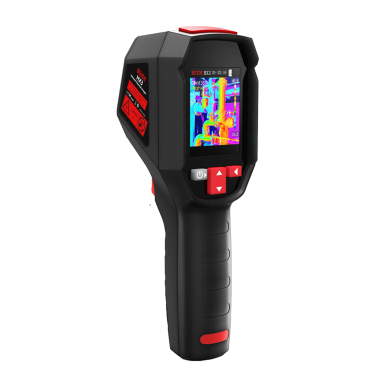Infrared Thermometer: Essential Tool for Accurate Temperature Measurement

# Infrared Thermometer: Essential Tool for Accurate Temperature Measurement
## What is an Infrared Thermometer?
An infrared thermometer is a non-contact temperature measurement device that detects infrared energy emitted by objects and converts it into a temperature reading. These devices have become increasingly popular in various industries and household applications due to their convenience, speed, and accuracy.
## How Does an Infrared Thermometer Work?
Infrared thermometers operate on the principle of detecting thermal radiation. Every object with a temperature above absolute zero emits infrared energy. The thermometer’s optical system collects this radiation and focuses it onto a detector, which then converts the energy into an electrical signal. This signal is processed and displayed as a temperature reading.
Key components of an infrared thermometer include:
- Optical system (lens)
- Infrared detector
- Signal processing unit
- Display screen
## Advantages of Using Infrared Thermometers
Infrared thermometers offer numerous benefits over traditional contact thermometers:
Non-contact measurement: Allows temperature reading without touching the object, which is particularly useful for moving objects, hazardous materials, or when maintaining hygiene is crucial.
Fast response time: Provides instant readings, typically within seconds, making them ideal for time-sensitive applications.
Wide temperature range: Can measure extremely high or low temperatures that would damage conventional thermometers.
Versatility: Suitable for various applications from industrial processes to medical use and food safety.
## Common Applications of Infrared Thermometers
### Medical Field
Infrared thermometers have become essential in healthcare, especially for measuring body temperature. They enable quick, hygienic screenings without physical contact, reducing cross-contamination risks.
### Industrial Use
In manufacturing and maintenance, infrared thermometers help:
- Monitor equipment temperature
- Detect overheating components
- Ensure proper functioning of machinery
- Perform predictive maintenance
### Food Industry
Food safety relies heavily on proper temperature control. Infrared thermometers help:
Check cooking temperatures
Monitor food storage conditions
Verify serving temperatures
### HVAC Systems
HVAC technicians use infrared thermometers to:
- Check duct temperatures
- Identify heat loss areas
- Diagnose system performance
## Choosing the Right Infrared Thermometer
When selecting an infrared thermometer, consider these factors:
Distance-to-Spot Ratio
This ratio indicates how close you need to be to the target for an accurate reading. Higher ratios allow measurements from greater distances.
Temperature Range
Ensure the thermometer can measure the full range of temperatures you need to monitor.
Emissivity Settings
Different materials emit infrared energy differently. Advanced models allow adjusting emissivity settings for more accurate readings on various surfaces.
Response Time
Faster response times are crucial for moving targets or rapidly changing temperatures.
## Proper Use and Maintenance
To ensure accurate readings and longevity of your infrared thermometer:
Keep the lens clean: Dirt or scratches can affect accuracy.
Keyword: infrared thermometer
Use within specified environmental conditions: Extreme temperatures or humidity may impact performance.
Allow for thermal equilibrium: When moving between very different temperature environments, let the thermometer adjust.
Regular calibration: Periodic calibration maintains measurement accuracy over time.
## Future of Infrared Thermometry
Technological advancements continue to improve infrared thermometers:
- Higher accuracy and resolution
- Smaller,